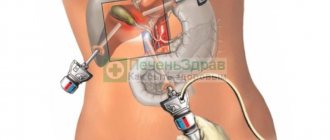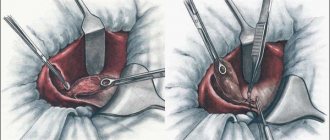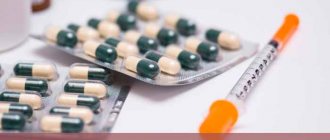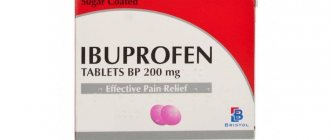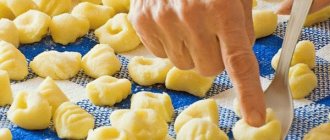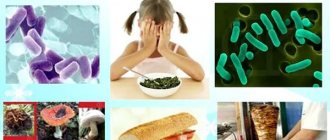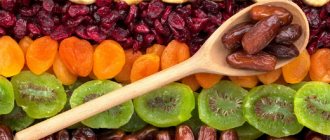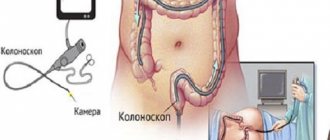Laparoscopy - removal of the gallbladder entails a serious adjustment of the diet. The patient is required to follow a special diet during laparoscopy for months. We tried to describe in detail the diet for each month after the operation.
One of the methods of treating acute and chronic cholecystitis is laparoscopy. We are talking about a modern surgical operation, the essence of which is a puncture in the abdominal wall to remove the gallbladder. This procedure is practically painless and low-traumatic. After the operation, the patient remains in the hospital for up to 2 days. Minimally invasive intervention is performed in approximately 95 percent of cases. But if there are complications arising from cholecystitis, then open surgery is necessary.
In any case, the postoperative period is associated with a number of inconveniences for the patient. Including following a certain diet for a long time.
Warning
Eating raw pumpkin and fresh juice is very beneficial for all healthy people. However, after cholecystectomy (especially the first six months), you should not experiment with your body. In this form, pumpkin causes bloating.
It is important to note that you also need to be careful with pumpkin seeds. The seeds are very valuable due to the presence of phytosterols that reduce the risk of cancer. You can eat them on a limited basis and about a year after surgery.
Pumpkin does not lose its unique properties during heat treatment. The product will be better absorbed, so all important substances will reach their destination.
Pumpkin - the queen of vegetables
The pumpkin certainly deserves royal regalia. What is the value of the vitamin composition! It contains 5 times more carotene than the famous carrot. Beta-carotene protects the body from free radicals that cause malignancy. There are vitamins C, B1, B2, B6, PP.
♥ Folic, pantothenic acid, potassium, magnesium have a beneficial effect on the circulatory system. Vitamin K contained in pumpkin helps synthesize proteins in the blood and bone marrow, and vitamin T reduces the likelihood of thrombosis.
♥ In terms of iron content, pumpkin is ahead of all vegetables!
♥ Zinc, important for the formation of bone tissue, is part of pumpkin. Therefore, dishes made from this vegetable are ideal for the prevention of diseases of the musculoskeletal system.
♥ Due to the presence of a whole bunch of vitamins and minerals, pumpkin can be called an immunostimulant. It also has anti-inflammatory properties.
The importance of pumpkin when the gallbladder has been removed
After cholecystectomy, digestive processes may disrupt their normal course (especially without following diet No. 5). Low concentrations of bile create conditions for the proliferation of pathogenic microbes in the intestines. To normalize work, fiber is required.
Pumpkin fiber is TENDER. It does not cause strong mechanical irritation of the intestinal walls. But, thanks to the presence of mannitol (a special carbohydrate), a laxative effect is provided!
Pumpkin contains huge amounts of soluble and insoluble dietary fiber.
Pectins (soluble dietary fiber) swell in the intestines and increase in volume, thereby facilitating the passage of the food bolus. Pectins remove toxins by absorbing them.
The function of fiber is not only to activate motor skills. And also help remove “bad” cholesterol from the body - this is vital after removal of the gallbladder. The presence of potassium salts in vegetables, which are responsible for the water-salt balance, ensures the normalization of the body's metabolic processes.
Pumpkin has a low glycemic index, contains only 20 kcal, is digested slowly, which means it promotes a long-lasting feeling of fullness.
The amino acid tryptophan, which pumpkin is rich in, is part of the so-called anti-stress products. Eating a piece of pumpkin makes you happier!
The diet after removal of the gallbladder is strict during the first week, then the diet expands. But you need to be prepared for the fact that you will have to adhere to proper nutrition for the rest of your life. Give up some foods completely and love others. If you follow the recommendations of specialists, the digestive system will work smoothly, there will be no discomfort or painful sensations. Otherwise, disease of the pancreas, liver, and duodenum develops.
Allowed vegetables
Vegetables are a storehouse of vitamin groups for the liver, for this reason they directly form the basis of a restorative diet after removal of the bladder. Initially, it is recommended to consume them boiled or stewed. Even healthy juices from vegetables (beets, carrots) are prohibited for the first 14 days. However, already on the 5th day after resection it is allowed to consume light vegetable salads, which should be seasoned with vegetable oil. The most useful and beneficial vegetables are the following:
- Beet. This vegetable contains many vitamins and flavonoids that relax the bile ducts and normalize the circulation of bile. Fresh beets can be consumed in the diet in moderation as early as a week after surgery.
- Carrots are rich in components that prevent toxic substances from accumulating in liver cells. It is necessary to introduce it into the daily diet in the same way as beets.
- Pumpkin - exhibits anti-inflammatory and wound-healing effects, for this reason experts advise consuming it immediately after the patient is discharged from the hospital. Pumpkin can be used baked or boiled for several days, and then it is possible to consume pumpkin juice.
- Zucchini. This vegetable is rich in potassium, which is required for normal liver function. The increased presence of fiber determines the absorption qualities that stop the accumulation of toxic substances in the liver. This product is especially useful for the biliary system because it eliminates excess fat, stopping the formation of cholesterol stones in the bile ducts.
- Cabbage - exhibits a good choleretic effect, especially cauliflower and broccoli. But in the first 7 days after the operation it must be used sparingly.
- Cucumber – improves metabolism, stopping the formation of stones in the bile ducts. This is especially important for preventing recurrence of gallstone disease, which can occur in 5-30% of situations after removal of the gallbladder.
- Tomato is rich in vitamin groups and fiber, for this reason it is useful for the body, however, it contains organic acids that irritate the mucous membranes of the stomach and has a pronounced choleretic effect. Tomatoes can be used for food only a few weeks after discharge. In this case, the tomatoes must either be stewed or scalded with boiling water and the skin removed. Fresh tomatoes are allowed to be consumed only 4 months after discharge.
- Onions - for the first weeks, this vegetable should be used only in boiled form, and then gradually introduce fresh onions into the diet.
- Garlic – it can be eaten only in small quantities, as it thins the blood and helps eliminate cholesterol. But it is necessary to start introducing garlic into the diet 2 weeks after surgical treatment.
Diet in the first days after removal
Surgery is stressful for the entire body. Removing the gallbladder disrupts the natural course of digestion; it will take time to force the gastrointestinal tract to work in a new way.
- It is forbidden to eat or drink. Complete fasting is required. It is allowed to wet your lips with ordinary water, non-carbonated mineral water. At the end of the day, rinsing your mouth with herbal decoctions is allowed. Chamomile, lemon balm, and mint are often prescribed.
- You are allowed to drink non-carbonated mineral water, regular spring water, and rosehip decoction without sugar. Drink no more than 1 liter per day. Otherwise, an increased outflow of bile begins, which is undesirable.
- The diet is also strict, but you are already allowed to drink dried fruit compote - raisins, dried apricots, prunes, apples, pears, weak tea without added sugar, low-fat kefir. Allowed foods should be consumed every 3 hours. Portion 100 ml. The volume of liquid per day should be no more than 1.5 liters.
- Fractional meals up to 8 times per day, serving no more than 200 g. Drink tea with sugar, pumpkin, apple, beet, and carrot juices. Prepare mashed potatoes and pureed soups in water with the addition of butter and sour cream. Low-fat boiled fish, fruit jelly, and omelette made exclusively from protein are allowed.
- The diet is expanded with white stale bread, biscuits, crackers, and bagels. Portion – 100 g per day.
- They eat porridge, boiled fish, chopped chicken, turkey, vegetable puree, low-fat cottage cheese, kefir, and homemade yogurt. Porridge is prepared from oatmeal, wheat, and buckwheat. Cook the dish in water or diluted milk. You can add a little sugar and butter.
Table of permitted and prohibited products
Excision of the bladder leaves an imprint on future life. But with all the dietary restrictions, you can treat yourself to delicious dishes and even indulge in sweets.
The list of what you can eat includes soups with vegetables, cereals, and milk. Animal protein is welcome - low-fat meat products, dairy category. Easily digestible fats are allowed. You should talk separately with a gastroenterologist about what vegetables you can eat, since after removal of the bladder, an inadequate reaction to food is possible.
The basic rule is the absence of oxalic acid in products.
The list of what not to eat includes mushrooms, seasonings, animal fats, margarine. Pickles, spices, marinades, and smoking are prohibited. Fatty meat, sausages, alcoholic drinks of any strength, chocolate, and baked goods are prohibited. You will have to give up fresh bread and foods that contribute to gas formation.
Table of permitted and prohibited foods after gallbladder removal
| Category | Allowed | Prohibited |
| Vegetables, greens | Cabbage, broccoli, onions, carrots, cucumbers, eggplants, sweet peppers, parsley, radishes, tomatoes, dill | Canned food, legumes, spinach, sorrel |
| Fruits, berries | Bananas, apples | Grapes, sour fruits |
| Nuts, dried fruits | Hazelnuts, raisins, dried apricots, prunes | Seeds |
| Mushrooms | All types | |
| Snacks | Chips | |
| Cereals | Buckwheat, oatmeal, rice | |
| Flour | Pasta, pancakes | Dumplings, dumplings |
| Bakery products | Bran bread, whole grain | Sliced loaf, butter buns |
| Sweet | Honey | Cookies, ice cream, chocolate, |
| Seasonings | Mayonnaise | |
| Dairy | Kefir, cottage cheese 1%, fermented baked milk | Full-fat milk 4.5%, cream 35%, Gouda and Parmesan cheese |
| Meat and poultry | Beef, rabbit, chicken breast and drumstick, turkey fillet, milk sausages, boiled sausage (milk and diet), hard-boiled eggs | Pork, lard, bacon, raw smoked sausage, duck, goose |
| Fish, seafood | Pollock, cod, hake, flounder | Salmon, salmon, trout |
| Fats | Butter, olive, sunflower | Lard, margarine |
| Beverages | Water, green tea | Wines white, red, vodka, beer, soda, cola, coffee, cocoa |
Diet for the fifth to seventh day
The principle of healthy nutrition involves the use of foods that are quickly digested, do not burden the gastrointestinal tract, do not cause stagnation or fermentation, and increase energy potential. You are allowed to eat vegetable puree, porridge, fermented milk products, lean fish, chicken, turkey, and rabbit.
The meat is prepared into rolls, cutlets, stewed or boiled, and then put through a meat grinder. Vegetables allowed are potatoes, onions, beets, carrots, zucchini, and pumpkin. Vegetable dishes are steamed, baked, stewed, then chopped. Among the sweets, baked apples, pumpkin porridge, cottage cheese with dried fruits are allowed. To prepare porridges, choose crushed buckwheat and oatmeal. An easy-to-prepare dish - pour boiled water over oatmeal, add a little salt, add a spoonful of sugar, and a piece of butter. Let it brew for 5 minutes.
The best drink to drink is rosehip decoction. It cooks very quickly. Pour water over the fruits, boil over low heat for 5 minutes, leave for half an hour. You should drink warm, 0.5 cups up to 3 times a day. Mineral still water, weak green, black tea. You will have to give up coffee.
Fermented milk products improve the condition of the gastrointestinal tract and speed up digestion. It is recommended to consume low-fat homemade products - sour cream, kefir, yogurt, boiled milk diluted with water, yogurt, cottage cheese.
Soups are prepared in water with the addition of butter. Grinded buckwheat, oatmeal, semolina, and vermicelli are used as filling. It is forbidden to add spices or salt in minimal quantities.
Postoperative diet
The main feature of nutrition after laparoscopic cholecystectomy is that the period of strict fasting is significantly reduced. If the patient feels well, the first full meal is allowed one day after the procedure.
Nutritional features in the first week after laparoscopic cholecystectomy
| Time period after surgery | Recommended menu | Image |
| The first 5-6 hours after the intervention | It is necessary to observe dry fasting. Eating food and any drinks is prohibited | |
| Period 6-24 hours after the procedure | Over the course of several hours, the patient needs to drink 0.5 liters of still water at room temperature. You should take no more than two sips at a time, followed by a break of 10-15 minutes. | |
| Second day after cholecystectomy | The menu on this day may include low-fat kefir, creamy vegetable soup, liquid oatmeal with water, and jelly without added sugar. You should eat food every three hours, the serving size should not exceed 0.5 cups | |
| 3-4 days after surgery | During this period, the patient is allowed light meals that are easily digestible and contain a minimum of fat. The menu includes fermented milk products, liquid or ground cereals, various types of jelly and jellies, mucus soups, fish fillets and lean meat. The diet may look like this: · before breakfast: half a glass of boiled water at room temperature; · breakfast: 4-5 spoons of liquid oatmeal with the addition of ¼ grated apple, egg white omelet, rosehip drink; · lunch: natural low-fat yogurt, unsweetened jelly; · chicken broth with egg whites, beef soufflé, chamomile infusion; · afternoon snack: plum jelly, cottage cheese casserole, water with lemon; · dinner: vegetable puree and 150 g fish fillet, tea; · at night: half a glass of 1% kefir | |
| 5-8 days after cholecystectomy | At the end of the first week after surgery, the patient’s diet should be aimed at normalizing the functioning of the gastrointestinal tract, improving digestion and peristalsis. With this diet, the patient should eat six times during the day. To reduce the load on the gastrointestinal tract, the serving size should not exceed 200-250 g. Sample menu for the day: · before breakfast: a glass of boiled water with a teaspoon of honey; · breakfast: ground buckwheat porridge, the white of one egg, tea with lemon; · lunch: baked apple without skin, jelly; · lunch: broccoli soup with chicken, fish balls with puree, unsweetened compote; · afternoon snack: cottage cheese casserole, fruit mousse; · dinner: steamed beef cutlets, grated steamed vegetables, sea buckthorn drink; · at night: a small pear, half a glass of low-fat milk |
Attention! Diet in the first week after cholecystectomy is necessary to normalize the functioning of all body systems. It is the key to the successful course of the treatment and recovery period. Dishes included in the diet should be selected taking into account the individual health characteristics of the patient.
Nutrition from the eighth day
After a week, they switch to a gentle diet. Its principles are to ensure the normal functioning of the digestive tract. The body receives all the necessary nutritional components, quickly processes food, and maintains metabolic processes in a normal rhythm. The liver produces bile in sufficient quantities and enters the small intestine in a normal manner.
You should eat small portions up to 6 times a day. Avoid overeating and prolonged fasting. After the meal you should still feel a slight feeling of hunger. It is recommended to drink drinks 20 minutes after eating food. Otherwise, the digestion process slows down.
Dishes should be steamed, baked, stewed, boiled, but it is not necessary to chop them or grind them through a meat grinder, you just need to chew them thoroughly. Eat warm. Too hot or cold is prohibited. The reason is still the same - slow digestion, increased stomach acidity.
Allowed dishes:
- Steam cutlets;
- Meatballs;
- Pancakes with meat, cottage cheese, apples;
- Meatballs;
- Protein omelette;
- Dumplings;
- Boiled chicken, turkey meat;
- Mashed potatoes;
- Borscht with beets;
- Soup with vegetable and light meat broth;
- Milk porridge;
- Fish;
- Syrniki;
- Puddings;
- Juices;
- Compote;
- Tea;
- Fermented milk products;
- Mineral water;
- Stewed zucchini;
- Pumpkin porridge;
- Lenten cookies, crackers, bagels;
- Vermicelli with butter, milk;
- Dumplings with potatoes, cottage cheese.
There is nothing complicated, but if a person is accustomed to fried, spicy dishes, he will have to adjust his tastes.
Features of dietary nutrition after laparoscopy
After surgery to remove the gallbladder, the patient must follow a therapeutic diet - table No. 5 according to Pevzner. This is a special diet aimed at ensuring normal function of the liver, gastrointestinal tract and biliary tract. By adhering to the menu allowed by the diet, the patient consumes a normal amount of carbohydrates and proteins and a significantly lower percentage of lipids.
Types of diets according to Pevzner
After cholecystectomy, the patient must adhere to the principles of mechanical and thermal sparing when preparing food. Products should be boiled, steamed or baked without adding fat or oil. Also, while following a diet, you must compose your diet based on the following rules:
- The amount of daily calories should be determined by a gastroenterologist or nutritionist, based on the individual health characteristics of the patient, his age and body weight.
- The amount of salt, spices and flavorings in dishes should be minimal. Do not use hot seasonings when cooking, or butter or lard for frying meat or fish.
- Meals should be fractional: you should eat at least five times a day. For lunch and afternoon snacks, it is recommended to choose light dishes rich in fiber and vitamins - fruits, vegetables, salads, etc. This diet helps regulate digestive processes and facilitates the digestion of chyme and its movement through the intestines.
Meals should be small and at least 5 times a day - To avoid stagnation of bile, in the morning before breakfast you should drink a glass of water at room temperature.
- The most high-calorie dishes should be consumed at lunch. The calorie content of dinner should be no more than 25% of the total.
- The temperature of food when serving should be no more than 38°C. Excessively hot dishes cause an active release of bile, and too cold ones can lead to spasm of the sphincter of Oddi.
Attention! The sphincter of Oddi is a smooth, ring-shaped muscle that controls the flow of bile into the duodenum. Sphincter spasm can cause severe abdominal pain, vomiting, and impaired peristalsis.
Sphincter of Oddi
Authorized Products
After a month and a half, they switch to proper nutrition. A person will have to give up some foods, but soon the new diet will become familiar and easy to follow. It is imperative to follow the recommendations, since junk food worsens digestion, irritates the intestines, burdens the liver, and leads to new health problems.
- Meat. You are allowed to eat chicken, turkey, veal, beef, rabbit, and lean pork. Fried foods are excluded, stewed, baked, boiled are allowed, but do not overeat. Meat should not be present in the daily diet, but twice a week is mandatory.
- Eggs. Boil, prepare an omelette in a steamer or frying pan. However, preference should be given to protein; the yolk makes digestion difficult and increases cholesterol levels. An excellent breakfast is an omelet with herbs, a piece of ham or cheese.
- Vegetables. They make stews, salads, purees, and eat them raw. Seasoning is allowed with butter or vegetable oil. You are allowed to eat everything, but in moderation. Without restrictions - potatoes, carrots, onions. Garlic, pumpkin, zucchini, beets, carrots, and cabbage are good for the liver. Raw tomatoes, cucumbers, bell peppers, and legumes are eaten in minimal quantities.
- Cereals. Porridge is prepared with water and milk, and cereals are added to the soup. It is recommended to eat buckwheat, rice, oatmeal, semolina, wheat, less often corn chaff, and millet. To prepare milk porridge, milk is diluted in equal proportions with water, and butter is allowed to be added at the end.
- Pasta. Used as a seasoning for soup, as a side dish, in a dairy dish, or in a casserole. Season with butter, adding sugar is allowed. Do not eat spaghetti with sauce or ketchup.
- Soups, borscht. Cooked in vegetable and meat broth. When the water boils, drain it, pour a new one into the saucepan, and begin preparing the dish. You are allowed to eat soup with rice, buckwheat, noodles, oatmeal, semolina, and millet. Borsch with beets, sorrel, cabbage soup.
- Fermented milk products. You are allowed to eat absolutely all dishes if there is no individual intolerance. Sour cream, kefir, fermented baked milk, yogurt, cottage cheese, homemade cheese, yogurt, baked milk.
- Sweets. You should limit your consumption of chocolate, pastries, and cakes. If it is impossible to completely refuse, eat a small piece. Honey, jam, jam, syrup, caramels, cookies, marmalade, marshmallows, marmalade, ice cream, and dried fruits are allowed.
- Beverages. No more than 1.5 liters per day. Still mineral water, cocoa, tea, compote, jelly, decoction of medicinal herbs, juices.
- Bakery products. Preference should be given to dried white bread, but baked goods are allowed in limited quantities. Buns, pies, bagels, rolls, loaf, white, black bread.
How to eat after surgery?
Of course, during this period of time, control over rational nutrition is carried out by the attending physician and the medical staff of the department, but it is on the self-control of the person himself that his further “gastrointestinal” health depends. If the rules of proper nutrition are not followed, the postoperative effect can be reduced to zero.
Allowed foods after removal of the gallbladder should include easily digestible foods that do not harm the mucous membrane of the stomach and intestines. It should promote all regenerative processes in the body and contain a sufficient amount of vitamins and protein. Let's consider the basic principles of the phased introduction of food products after the operation.
Step-by-step introduction of products after surgery:
- Day 1. Immediately after surgery and during the first day, eating and drinking is prohibited. You can only lightly moisten your lips with water. After 6 hours, you can rinse your mouth with a herbal decoction (be sure to consult your doctor first), but do not swallow.
- Days 2-3: add rosehip decoction or clean, still water warmer than room temperature in small quantities. During the specified period of time, the amount of liquid consumed should not be more than 1 liter. It’s still not recommended to eat, but you need to move slowly.
- 3-4 days: compote or light fruit jelly is added, kefir or unsweetened yogurt (0% fat) can be taken. You should consume up to 1.5 liters per day, and “solid food” is still not allowed.
- From the 5th day after surgery, a small amount of vegetable puree (previously thoroughly pureed) is added. If a person is uncomfortable on such a diet and does not feel well, he is allowed to take 100 g of dried crackers, finely crushed.
- After a week, it is already possible to take the main meal, the essence of which is to follow a fractional diet (5-6 meals per day), in small portions (with equal time intervals). It is this approach that will help to effectively digest the food consumed and ensure sufficient flow of bile. Of course, all food products must be prepared boiled or steamed, crushed and warm.
- From the tenth day you can eat solid food. The remaining rules must be observed for at least one year.
Is there a difference in diet after laparoscopy and laparotomy?
Usually, all people think that the listed nutritional rules need to be followed only after abdominal surgery to remove the gallbladder (laparotomy). It should be noted that after the laparoscopic approach it is also necessary to maintain a balanced diet, however, the doctor can adjust the timing of adding or removing various foods, depending on the obtained surgical results and the individual approach to the patient. Food intake should be the same in both cases and should not depend on the intervention technique (laparoscopic or laparotomy). The most important rule is the strictest restriction of nutrition, especially in the first month after surgery. After 1-2 months, it is permissible to expand the diet, but three months should be strict in eating behavior, which will contribute to further improvement of health.
Nutritionists believe that a patient without a gallbladder (and even when the diseased organ is still present, for example, preoperatively) needs to adhere to the specified diet in the long term, one might say for life. Only extremely rarely, with the doctor’s permission, can you treat yourself to prohibited foods, and then only under the condition of stable remission over a long time. It is important to emphasize that this is possible extremely rarely, the basic diet remains constantly stable, and the final decision on individual nutrition and food tolerance is made only by the doctor.
Diet menu after gallbladder removal
As mentioned above, after abdominal or laparoscopic surgery, neither water nor food is allowed on the first day. The next day you can drink water, rosehip infusion, liquid jelly, rice infusion, compote or light weak tea. To prepare a rosehip decoction, grind ten fruits and add a glass of boiled water, boil for fifteen minutes, strain and take about one hundred milliliters.
Already from the fifth day, pureed porridge, vegetable puree soups, steamed omelettes, steamed meat or fish soufflé are added. Of course, broths made with meat and fish are still prohibited. It is mandatory, under the supervision of a doctor, for at least two weeks after laparoscopic surgery and about a month after abdominal surgery, to strictly adhere to a diet, the main principles of which are:
- The amount of protein is about 100 grams;
- Animal fats and vegetable oils are prohibited in limited quantities (up to 50 grams);
- The amount of carbohydrates consumed is 230-260 grams, with a complete abolition of the consumption of sweet foods;
- The total calorie level of the diet is 1800-2100 kilocalories;
- Dishes should be consumed in crushed form;
- Avoid foods that irritate the mucous membranes of the stomach and intestines;
- Meals in small portions (5-7 times a day);
- Observe meal times (develop conditions for yourself to eat at a certain time);
- The temperature of the prepared food is warm;
- Cooking methods: boil and steam method;
- The amount of water you drink per day is up to one and a half liters;
- The amount of salt is about 4-7 grams.
Forbidden menu
After surgery to remove the gallbladder, it is strictly forbidden to consume foods that can cause acute inflammation or enhance the processes of bile thickening:
- High-cholesterol foods - offal (liver, kidneys, heart, etc.), in addition - pork, lamb, fatty fish, caviar, egg yolk.
- Raw foods with coarse fiber - vegetables, fruits.
- Alcohol-containing products.
- Additives containing essential oils (mustard, pepper, etc.); vegetables like radishes and from the onion family.
- Beans, cabbage and grapes cause fermentation processes in the intestinal tube.
- All spicy, fried and, of course, fatty foods.
- Smoked meats, marinades, pickles and canned food.
- Any goodies containing fatty cream.
- Sauces produced under production conditions.
Basic nutrition rules for everyone after gallbladder removal:
- Liquid dishes. These dishes should be prepared according to vegetarian principles. Very rarely, on the recommendation of a doctor, a weak broth made from meat or fish can be allowed.
- Like healthy people, it is recommended to chew the food you eat thoroughly and eat slowly.
- As for the second courses, they are prepared purely by boiling or steaming. Naturally, the addition of any fatty ingredient is completely excluded.
- After surgery, you should eat every two to three hours, about 5-7 times a day, portions should be small.
- It is necessary to observe the drinking regime. The temperature of drinks, jelly, decoctions and clean water should be warm. Freezing and excessively hot liquids are excluded. Juices from apples and pumpkins are extremely useful in these conditions, but if they contain “sourness,” dilute them with boiled water.
- The diet must include cottage cheese products and fermented milk foods. Sour cream is fine, but 0% fat.
- It would be best to completely avoid or at least reduce as much as possible the consumption of strong tea and coffee, since they have an irritating effect on the mucous membranes.
- Sour fruits and berries should be abolished, and sweet ones can be eaten, but also in moderation.
- You can eat any kind of porridge, with the exception of semolina. Preparation: with milk and water (in equal proportions).
- Eat vegetables only in pureed form (like puree) or stewed.
- At first (after the operation), chicken yolks will be prohibited, but whites can be eaten calmly, especially if they are prepared in the form of a steam or oven omelet.
- In small quantities biscuit-type cookies, since they contain a small amount of fat.
- As for bread, white, day-old and dried is better, fresh is not advisable.
- Potatoes, like any vegetables, in the form of puree, without the use of any sauces.
- Vegetable oil - only as a salad dressing.
- Those with a sweet tooth can take jam, marshmallows, jelly, and marmalade in moderate portions.
What fruits can you eat?
If there are no concomitant diseases - stomach, liver, intestines - all vegetables are allowed to be eaten. But only some can be eaten freely, others in limited quantities. Moreover, among fruits and berries there are natural hepatoprotectors that improve liver function, stimulate the movement of bile, and prevent stagnation. For a diseased gallbladder, as well as after its removal, experts recommend eating grapefruit, apricot, and persimmon.
Allowed fruits and berries:
The fruits must be ripe. They are consumed fresh, canned, or drunk in juices.
Diet for the first days after cholecystectomy
The gallbladder is an organ involved in digestion. After its removal, it is important to restore this process, and the main thing here is proper nutrition. The most difficult days occur in the first hours and first days after surgery, spent in the hospital. Today, gallbladder removal is performed using laparoscopy; this operation has its advantages, including a shorter rehabilitation period; the patient stays in the hospital for no more than 5 days.
At this time, the patient is prescribed exclusively liquid pureed food in small quantities.
On the first day you are allowed to drink only one glass of water, the next day you can drink weak broth and kefir. In subsequent days, pureed soups and liquid porridges are added.
What not to eat
Foods and drinks that cause fermentation, rotting, and impede digestion are prohibited. At the same time, some products are completely prohibited, while others are limited.
Should not be consumed in large quantities:
- Cabbage;
- Legumes;
- Butter pastries;
- Candies;
- Chocolate;
- Bell pepper;
- Cocoa;
- Garlic;
- Fried foods;
- Salted fish;
- Sausages;
- Cheese;
- Kvass;
- Canned food;
- Beer;
- Smoked meats.
Prohibited:
- Spices;
- Fatty foods;
- Salted, smoked fish;
- Ketchup;
- Sauces;
- Mayonnaise;
- Fried pies, meat;
- French fries;
- Hot dogs;
- Pizza;
- Products with added flavor enhancers and flavorings;
- Carbonated drinks;
- Alcohol;
- Coffee.
It is forbidden to overeat, eat at night, or have dinner later than 2 hours before bedtime.
Further diet
On the forums you can find reviews where, after removal of the gallbladder, they continue to eat normally, do not limit themselves in anything, and feel great. This behavior is not allowed, since poor nutrition leads to pathological processes and health problems over time. Following a diet is the key to good health while living without a gallbladder.
You only need to follow strict instructions during the first 30 days, when the body is recovering after surgery. There are no special restrictions in the future, you just need to eat right. Fatty, fried foods, sweets, and alcohol negatively affect not only the digestive organs, but also the heart, blood vessels, muscles, hormonal, endocrine, and nervous systems. Improper nutrition leads to weight gain, obesity, and metabolic disorders. As a result, pathologies of the liver, intestines, stomach, and other organs appear.
It is much easier for women to stick to proper nutrition; men need to make every effort. After surgery, you need to immediately prepare yourself to change your diet. Lifestyle.
Changes in digestive processes after surgery
After the gallbladder has been removed, the liver continues to produce bile, its consistency and composition remain the same, but painful discomfort and heaviness may appear after eating fatty foods. It is important to note that problems against this background begin to intensify, since there is a process of constant flow of bile into the intestinal tube.
It is for these reasons that in the syndrome after removal of the gallbladder (postcholecystectomy), problems may appear in the digestion of food, painful discomfort, a feeling of fullness in the abdomen, stool disturbances, and nausea may begin to disturb. Also, after surgery, in the early period, there may be functional disorders, manifested as dyskinesia, inflammatory processes or recurrent stone formation in the biliary tract. Since the release of bile into the intestines occurs in the duodenum, symptoms of intestinal inflammation, as well as inflammation of the pancreas and gastric mucosa, may occur.
Following a gentle diet for a long time will help to minimize the postoperative risks of adverse events and give the liver the opportunity to function rationally.
Recommendations
In parallel with dietary nutrition, you should drink folk remedies that improve the functioning of the liver and digestive tract.
- Rose hip. Prepare your own decoction or tincture from the berries. The recipe was described above. A syrup based on rosehip extract is available for sale, with the addition of sugar, citric acid, and ascorbic acid. The product improves the flow of bile, eliminates inflammatory processes, renews liver cells, and strengthens the immune system. It can be taken periodically, in long courses or continuously. Contraindication is an acute form of gastritis with high acidity. One of the names of the syrup is Kholosas, the cost is about 150 rubles.
- Beet juice, carrot juice. Fresh juice is mixed in a ratio of 1:10. If you have stomach problems, dilute with water in equal proportions. Let it sit for 15 minutes, drink a glass at a time in the morning on an empty stomach. The product eliminates congestion, improves digestion, helps with constipation, and renews liver cells.
- Milk thistle with honey. The plant is a natural hepatoprotector and is used to make many medicines. In combination with honey, it has a beneficial effect on the functioning of the liver and gastrointestinal tract, removes toxins, strengthens the immune system, and eliminates inflammatory processes. 2 hours
- Pumpkin juice. Every morning you should drink 1 glass on an empty stomach. With regular use, the liver and digestive system will function normally. It is allowed to add zucchini and carrot juice.
- Radish with honey. Choleretic agent with hepatoprotective abilities. Used for the treatment of liver diseases, as well as for prevention. Grate the radish on a fine grater, mix with fresh honey, take 1 tbsp. Spoon on an empty stomach.
If it is impossible to give up alcohol, after a feast it is recommended to drink the drug Allohol for several days. Removes toxins, supports the liver, normalizes the flow of bile.
Menu for a week after gallbladder removal with recipes
Immediately after the surgical procedure, eating is allowed only on the fourth day. Meals should be fractional - up to 8 times a day. Portion no more than 100 g.
4th day
- Green tea with 1 teaspoon of sugar.
- Mashed potatoes seasoned with sour cream, butter, milk.
- Soup. Throw potatoes, carrots, and onions into boiling water. After 5 minutes, crushed buckwheat. At the end of cooking, add chopped herbs and butter.
- Boiled fish. They prepare capelin, hake, and any sea fish without small bones. Throw into salted water, take out after 20 minutes.
- Low-fat cottage cheese.
- Kefir.
Between breaks you are allowed to eat a baked apple, yogurt, and drink carrot juice.
5th day
- Omelet without yolk.
- Tea with bagels.
- Vermicelli soup. It is prepared in the same way as the recipe described, only instead of buckwheat, vermicelli is added. A piece of yesterday's bread.
- Mashed potatoes.
- Cottage cheese casserole.
- Kefir.
For snacks, cookies, yogurt, carrot juice.
6th day
- Oatmeal with milk. Brew the cereal with boiled milk and add sugar. After 5 minutes they eat.
- Tea with crackers.
- Soup with buckwheat and meat broth. Water with meat boils, drain. Pour in a new portion. After boiling again, start preparing the soup.
- Buckwheat porridge with steamed chicken cutlet. Twist the minced meat, add onions, salt, and egg. Form cutlets, roll in flour, place in a slow cooker, turn on the appropriate mode.
- Cottage cheese casserole.
- Compote with dried fruits.
- Yogurt.
- Banana.
7th day
- Omelet with greens. Green tea with sugar.
- Meat broth soup with vermicelli.
- Carrot juice.
- Stuffed cabbage rolls. Boil the cabbage. Separately, carrots and onions are stewed in vegetable oil. Boil rice. Mix porridge, vegetables, chicken or turkey mince. Wrap the filling in a cabbage leaf. Place in a multicooker bowl, pour over sour cream. Stew on the appropriate mode.
- Pancakes with curd. For pancakes: 100 g flour, 2 eggs, 1 tbsp. Spoon of sugar, 0.5 tsp. Spoons of salt, 1 tbsp. A spoon of starch, vegetable oil, 350 ml of milk. The pancakes are fried on both sides; there is no need to additionally grease the pan. The cottage cheese is ground with sugar, sour cream, and protein is added. Wrap the pancakes and place in the oven for 20 minutes. Served with sour cream.
- Kefir.
- Baked apple.
The dishes are prepared quickly, they turn out tasty, nutritious, and healthy.
Recommended menu by day
In the first few weeks after the operation, the menu is very limited and includes drinks. By going through this critical stage of recovery, a person helps the digestive system adapt, and with the help of restrictions, achieves a reduction in stress on the organs. After a month after surgery, it is recommended to use diet number 5, compiled by an experienced nutritionist. This method involves eating light food, prepared mainly by baking or boiling.
The diet is quite varied and includes lean meat, vegetable purees, baked fish and other products. For meat products, it is best to use boiled chicken. It is recommended to choose grain porridges as a side dish: buckwheat, pearl barley, wheat and others. For breakfast you should choose vegetables and fruits. It is allowed to prepare salads, which must contain limited quantities of tomatoes . The diet is supplemented with black bread, but not more than 10 grams per day. Based on these recommendations, you can create a sample menu for the day:
- 1 day. Breakfast: porridge with milk. Lunch: chicken broth, liver with rice. Dinner: mashed potatoes, fish.
- Day 2. Breakfast: fresh vegetable salad, bread. Lunch: buckwheat soup, pasta with cutlet. Dinner: wheat porridge with steamed vegetable cutlets.
- Day 3. Breakfast: boiled egg, pate. Lunch: chicken soup, buckwheat porridge, chicken cutlet, salad. Dinner: boiled potatoes, liver cutlets.
- Day 4 Breakfast: milk porridge with rice. Lunch: rassolnik soup, mashed potatoes, sautéed vegetables. Dinner: boiled potatoes, greens, fish.
- Day 5 Breakfast: boiled vegetables, bread. Lunch: boiled chicken fillet, rice, soup with herbs. Dinner: tomato salad, wheat porridge with fish.
- Day 6 Breakfast: pumpkin puree. Lunch: fish soup, buckwheat porridge, fresh vegetables. Dinner: cabbage rolls, broccoli puree.
- Day 7 Breakfast: cottage cheese. Lunch: chicken broth, steamed meatballs, corn porridge. Dinner: boiled potatoes with herbs, baked fish.
2 hours after breakfast and lunch, you should also have snacks. The best choice for this is:
- salads,
- crackers,
- yogurt,
- Dessert.
For drinks, you can use tea, fruit compotes, jelly, juices, and still water. You need to get rid of coffee and carbonated drinks from your menu.
Reviews
Dear readers, your opinion is very important to us - therefore, we will be happy to provide feedback on the diet after gallbladder removal in the comments, this will also be useful to other users of the site.
Natalia:
After the operation, doctors told me to stick to a strict diet for six months, then introduce regular foods into my diet. There was a vague answer regarding alcohol. It seems impossible, but it is also possible, if in moderation. Six months have passed and so far everything is fine. From time to time I start pampering myself with tasty things, no problems arise. I even ate a little French fries.
Alina:
There is nothing special about the diet. I live as before. I try not to eat just anything, porridge, soups. I don’t eat fried foods and eat meat in limited quantities. I love fermented milk products, fruits, berries. Many people follow this diet to lose weight. I had gastritis before the gallstone problems, so I was on a diet long before the operation.
Which vegetables to give preference after gallstone resection?
The basis of nutrition in the absence of gallstones should be vegetable dishes. At first they are processed (cooked, stewed), later they can be eaten raw, seasoned with vegetable oil or low-fat sour cream. Which vegetables are healthy:
- Beet. A healthy root vegetable that improves the functioning of the gastrointestinal tract. It can be consumed raw a week after surgery, but in small portions;
- Cabbage. It has a choleretic effect, you can eat broccoli, cauliflower, for the first time this vegetable is best consumed in stewed form;
- Carrot. The chemical composition of root vegetables includes vitamins, minerals, proteins and carbohydrates. Carrots normalize the digestion process and are immediately introduced into the diet when the gallbladder has been removed;
- Tomato. It has a pronounced choleretic effect and contains many organic acids. It is recommended to consume tomatoes stewed, after removing the skin first. Freshly introduced into the diet after 4 months;
- Pumpkin. Useful for the digestion process, immediately taken stewed or baked, you can drink pumpkin juice;
- Zucchini. A vegetable with a high potassium content is necessary for the normal functioning of the liver and gastrointestinal tract as a whole. Zucchini fiber has an absorbent effect and cleanses the liver of toxins. Substances in zucchini prevent the formation of cholesterol deposits in the bile ducts;
- Cucumber. Not only a tasty and aromatic vegetable, but also very beneficial for the digestive system. This low-calorie product is well absorbed and prevents the accumulation of cholesterol deposits, which is important during gallstone resection;
- Garlic. This miracle vegetable is essential for lowering cholesterol levels. When resection of the gallbladder, it can be introduced into the diet after 2-3 weeks in limited quantities;
- Onion. It has bacterial properties, prevents vitamin deficiency, promotes the digestion process, it is recommended to use it after surgery in boiled or stewed form. You can eat it fresh 3-4 weeks after gallstone laparoscopy.
Video
And in general, you start eating pumpkin, your stomach feels light, there is no rumbling, you don’t feel anything, and in addition to this comfort, any swelling disappears, your face becomes attractive. And what I also really like is that you can cook whatever you want from pumpkin, depending on your mood: if you want something sweet, you can add honey, cinnamon or vanilla. And if you want to thoroughly refresh yourself, then add fried onions, spices, a little sour cream or tomato paste. Another advantage is that anyone can cook pumpkin.
Cut the pumpkin into portions, peel it in advance, place it on a baking sheet and place in a moderately preheated oven. You can tell if the pumpkin is ready by piercing it with a fork. Drizzle each piece of cooked squash with olive oil and enjoy the healthiest meal possible.
Baked pumpkin is especially useful, but, of course, after it is raw. It’s just that in winter, when you want something hot, you don’t always want pumpkin salad, although for me it goes without saying.
Recipes for dishes with a removed bladder
The new diet, if you have had your gallbladder removed, excludes fast food, confectionery, industrially processed food, and spices.
If your receptors are accustomed to overstimulation, then in the first time after surgery both food and life will seem bland. But over time, you will learn to distinguish the subtle flavors of fresh and properly prepared foods. Then you will notice that the absence of gall does not cause any inconvenience.
Healthy and tasty dishes are easy to prepare:
- Chicken soup with vegetables does not add extra load. The composition includes any seasonal vegetables (broccoli, potatoes, carrots, eggplants), the most satisfying component is chicken breast. Instead of seasonings - parsley, dill, sour cream 10%. Boil the fillet with vegetables. Grind the meat and crush the vegetables in a blender. Add sour cream and mix thoroughly. Combine the puree with fillet pieces and herbs. The soup can be salted, seasoned with grated cheese and served with slightly dried bread.
- Omelet with minced meat is a popular healthy nutrition dish for patients with a removed bladder. You will need lean meat, such as beef or chicken. Boil the meat, grind into mince. Beat the eggs, pour in the milk, add the minced meat, stir, and add salt. Grease a baking dish with butter and pour the mixture into it. Cook in a water bath.
- Berry and cottage cheese casserole is a sweet dessert that has a beneficial effect on digestion when the gallbladder has been removed. Combine and grind the cottage cheese in a blender, beat the eggs with sugar, mix with the cottage cheese and semolina. Add the chopped dried fruits last. Grease the pan with butter, add the curd mixture, bake at 200°C for 40 minutes. Pour the finished cottage cheese with berry jam or berries mashed with sugar.
